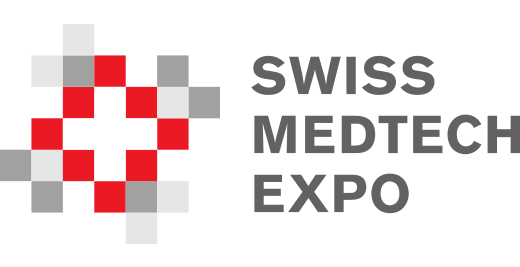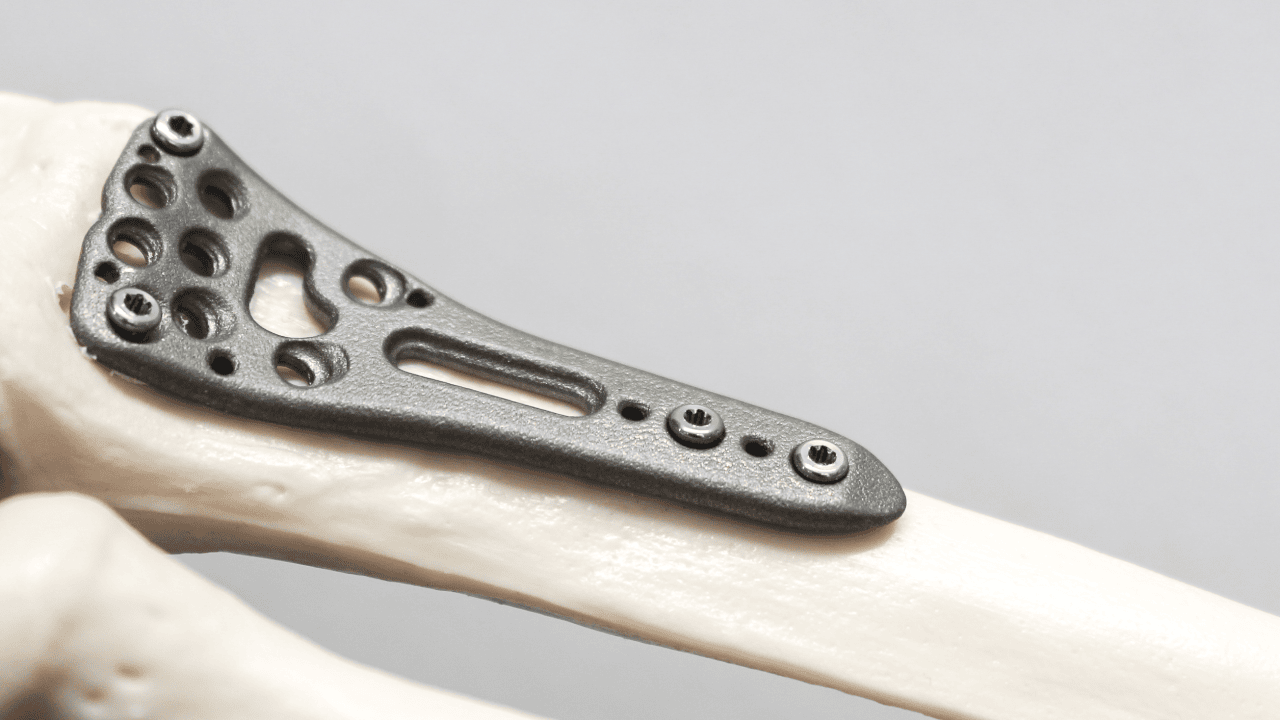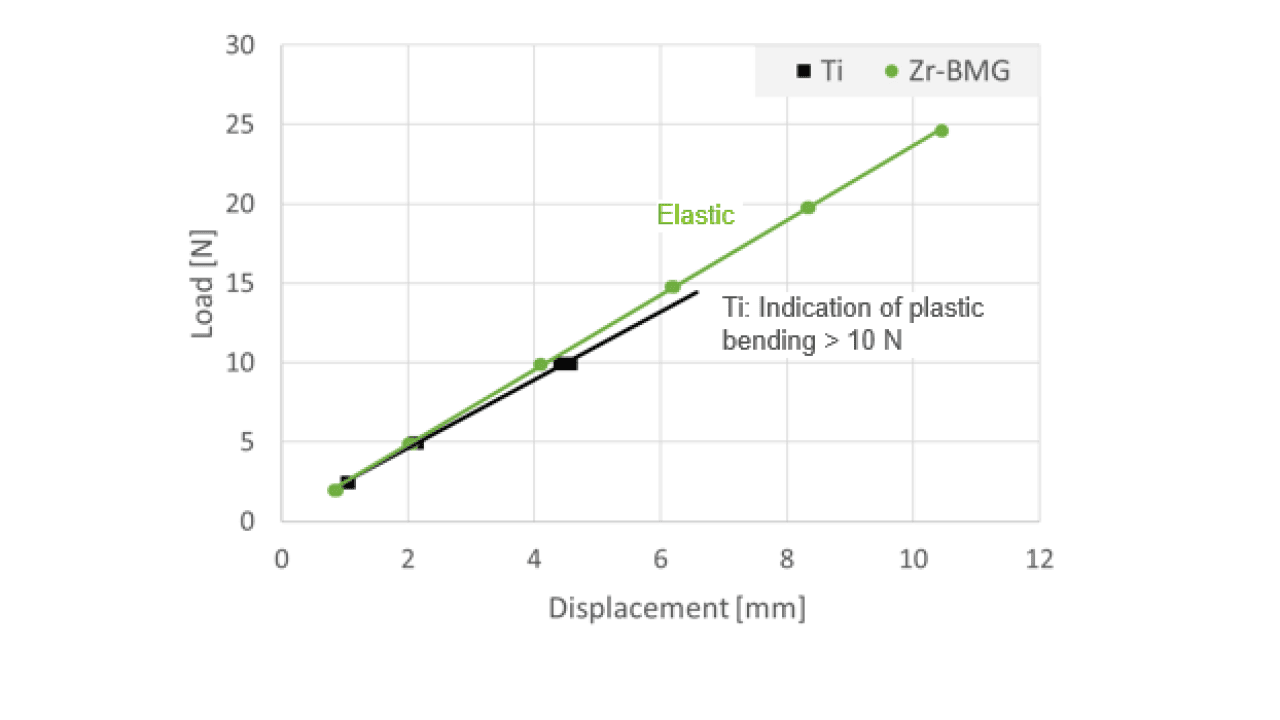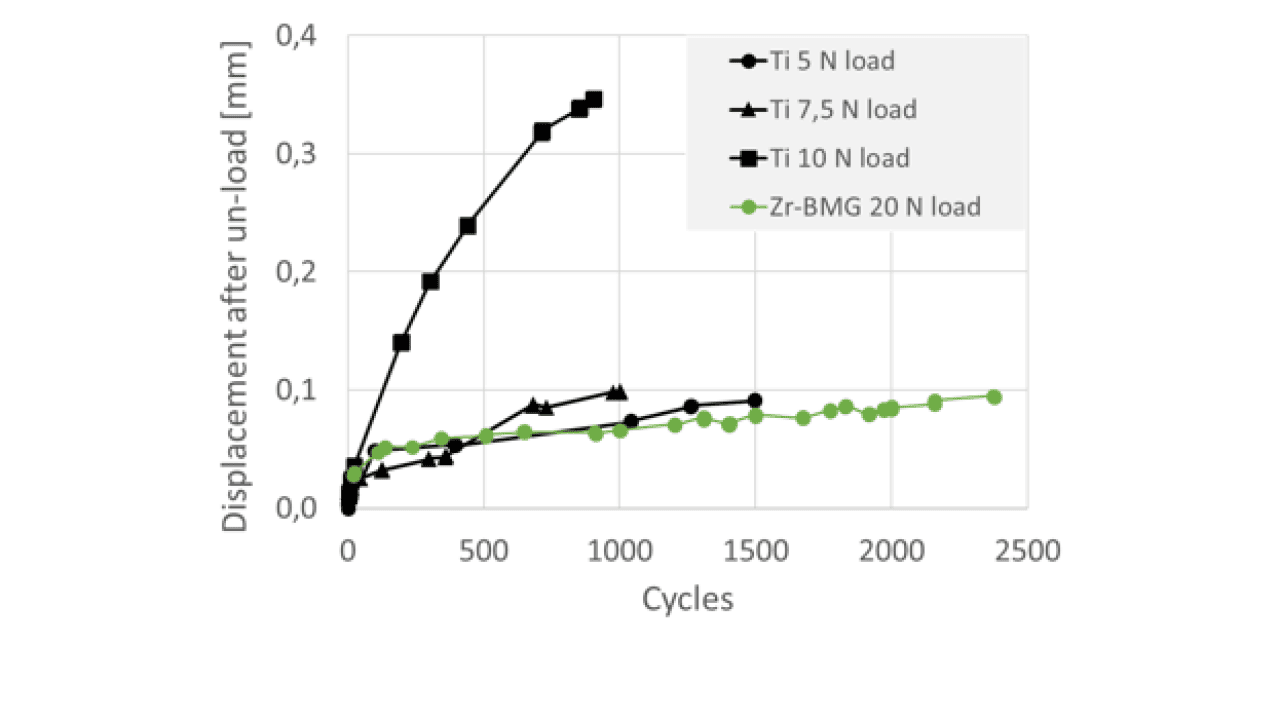The requirements on metals used for orthopedic applications are extensive – high strength, low Young’s modulus, outstanding corrosion, fatigue and wear resistance. One of the most promising materials is Zr-based bulk metallic glass (BMG).
Radius fracture healing needs stabilisation as well as micro movement
Generally, implants used for radius fractures all have a low profile and a highly polished surface to avoid negative adhesions and to ensure an uncomplicated explantation. The thinner these plates are after implantation, the better the ligaments and tendons can work, which usually run along the plate above the fracture after the operation. Here, even avoidable increases in plate thickness in the µm range can cause pain or initiate post-traumatic malpositioning. However, if the thickness of the plates is reduced too much, this leads to a decrease in strength.
New material class offers unique property portfolio
Amorphous alloys have a fundamentally different structure compared to the aforementioned currently used crystalline materials of 316l stainless steels or Ti-based alloys. Shock cooling of the melts results in high cooling rates, which prevents the basic atomic order from equalizing energetically and assuming a basic crystalline structure. The state of the liquid melt is thus solidified so quickly that no phase transformation
from liquid to solid takes place and the amorphous structure has neither phase nor grain boundaries. The solidification also results in a very small shrinkage in the near-net shape production. These general conditions enable properties of the amorphous alloys that were previously impossible in crystalline materials or could only be produced at great expense. With simultaneously high strength and high elasticity, the material offers very strong corrosion and abrasion resistance and can be post treated to high surface quality. The resistance to impurities has even been proven to be biocompatible.
In vitro as well as in vivo studies have already confirmed this, highlighting Zr-based metallic glass, as the amorphous alloys are also called, as a candidate for next-generation biomedical applications. Thus, amorphous alloys have a great potential to benefit in the field of plate osteosynthesis by near-netshape manufacturing processes. Starting with the high linear elastic behavior, through the total load capacity and the resulting miniaturization with constant stability, to the long-term stability in the fatigue test.
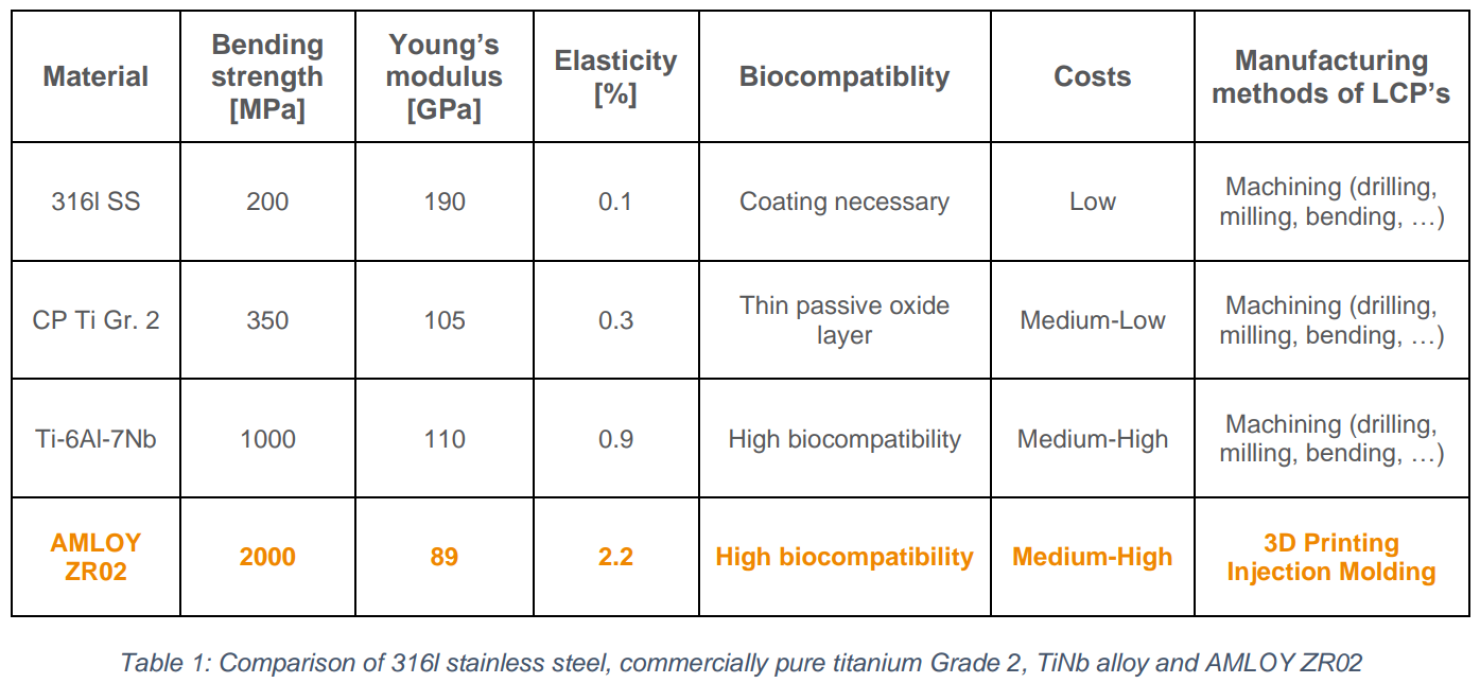
Elastic range tests demonstrated the benefit of the amorphous microstructure on the plate performance. It was possible to achieve the same stiffness as a comparative Ti-plate. However the elastic limit of the amorphous plate exceeded by far the standard material. Also in fatigue tests the new materialclass impressivly demonstrated its potential (see the figures on top).
For further and more detailed information download our free Case Study.
